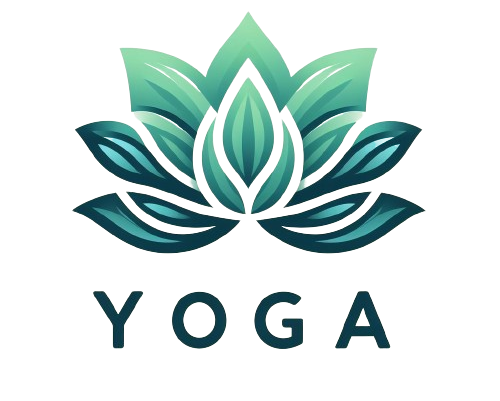Picture this: you’re all set for a little mind-time. You’ve got your quiet corner, those headphones with just the right type of soothing tunes, and you’re ready to dive deep into meditation. But hold up – have you thought about your posture? Yeah, that thing your mom always nagged you about at the dinner table. Turns out, it plays a huge role in meditation.
Why Posture Matters More Than You Think

Maintaining the correct posture during meditation transcends the superficial benefits of simply appearing more composed and authentic in your social media snapshots. Indeed, the importance of correct alignment goes much deeper, affecting your meditation practice. With appropriate posture, there is a significant enhancement in the quality of your meditation sessions. This is because proper alignment facilitates a deeper connection with your mind and body, allowing you to maintain focus and stay engaged throughout the practice. When your body is correctly aligned, it promotes better breathing and blood circulation, which in turn can help in reducing physical discomfort and promoting a sense of overall well-being. This means that each meditation session becomes more effective, enabling you to achieve a state of relaxation and mindfulness more readily. The impact of maintaining the right posture during meditation is profound, influencing the physical aspects of your practice and elevating your mental and emotional experience as well. It amplifies the benefits you derive from meditation, making each session more fruitful and rewarding.
Mind-Body Connection
The concept of the mind-body connection teaches us that our mental and emotional states are inextricably linked to our physical wellbeing, and adopting the simple act of sitting with a straight, yet relaxed, posture serves as a powerful illustration of this principle. When you straighten your back—careful not to strain or stiffen—you are doing far more than just preventing potential future back pain or evading the dreaded visit to the chiropractor. You are actively engaging in a form of non-verbal communication with your own mind. This deliberate act of alignment serves as a signal to your brain, drawing its attention away from the myriad distractions and stresses that characterize daily life, and to a state of heightened focus and awareness. It’s as if by arranging our physical selves in a posture of alertness and openness, we are creating a conducive environment for our mental faculties to shift gears from the chaotic, often superficial flurry of day-to-day tasks to a deeper, more reflective state of mind. This transition facilitates a more acute awareness of our immediate environment and our internal emotional landscape and cultivates a sense of tranquility and centeredness that is essential for meaningful introspection and personal growth.
Breathing
The act of breathing deeply while maintaining a slouched position can prove to be quite the challenge, and is certainly far from comfortable. It’s a vivid reminder of the intricate dance between our body’s physical posture and our breathing capability. Opting for a solid, upright posture doesn’t just combat the likelihood of discomfort; it fundamentally alters the way we breathe, effectively unlocking the full potential of our diaphragm. This muscular membrane plays a pivotal role in breathing, acting as a natural barrier and facilitator for our lungs’ ability to expand. When we sit up straight, we give our diaphragm the space it needs to move freely, thereby maximizing the volume of air we can draw into our lungs with each breath. This process is essential for those practicing meditation, where deep, controlled breathing is not just a technique, but a pathway to wellbeing.
It’s about more than just better breathing mechanics; it’s a strategy to invite a higher intake of oxygen—an element that supports cell regeneration, enhances brain function, and bolsters our immune system. This oxygen influx is invaluable, as it nourishes the body and sharpens the mind, paving the way for a deeper meditative state. This increased oxygen level is important in flushing out toxins and reducing stress, contributing to a profound sense of relaxation and mental clarity. The decision to adopt an upright posture as we breathe is a choice to create the optimal conditions for our mental and emotional landscapes to flourish, allowing us to tap into a more serene, insightful state of being.
Discovering Your Ideal Meditation Pose
Here’s where personalization comes into play. There’s no one-size-fits-all when it comes to meditation poses. Your perfect position might be different from someone else’s, depending on various factors like flexibility, physical condition, and personal preference.
Start with the basics—a comfortable, yet firm seating arrangement. This could be a traditional cross-legged position, a chair if that suits you better, or even lying down, though beware of the accidental nap trap here. Key point? Your spine should hold a neutral, upright line.
As you try different positions, tune into your body’s feedback. Any lingering discomfort or unusual strain? Time to adjust. Remember, the goal is to facilitate focus and relaxation, not to win a flexibility contest.
Don’t shy away from using props! A meditation cushion or even a rolled-up towel can make all the difference in supporting your posture, helping maintain that all-important spinal alignment without putting undue stress on your joints.
Posture Pitfalls to Avoid
While we’re exploring this journey of alignment and introspection, there are some common slip-ups that can hinder your progress.
Ironically, trying too hard to achieve ‘perfect’ posture can lead to tension, particularly in the back and shoulders. Your posture should be intentional, yet natural and relaxed.
Incorporating posture awareness into each session builds muscle memory and, over time, makes good posture a natural component of your meditation practice. It’s tempting to slump some days and over-correct on others, but consistency is key.
Our bodies tend to sneak into old habits, especially when we’re drifting into deeper layers of meditation. Make a gentle, mental note to periodically scan your posture during meditation. A slight adjustment mid-session can rejuvenate the mind-body connection without disrupting your flow.
Embracing the Journey
Remember, incorporating posture into your meditation practice is a journey, not a one-off task. As you become more in tune with what works for you, you’ll likely notice improvements not just in your meditation, but in your overall well-being.
Well, maybe not perfect—let’s say, practice makes progress. The more consistently you integrate good posture into your mindfulness routine, the more naturally it will come to you, enhancing the quality of your meditation sessions and, by extension, your daily life.
This mindfulness about posture can ripple out, impacting how you carry yourself throughout the day. An improved posture during meditation might lead to better sitting habits at work, a more confident stance when interacting with others, and even a reduction in those nagging backaches.
